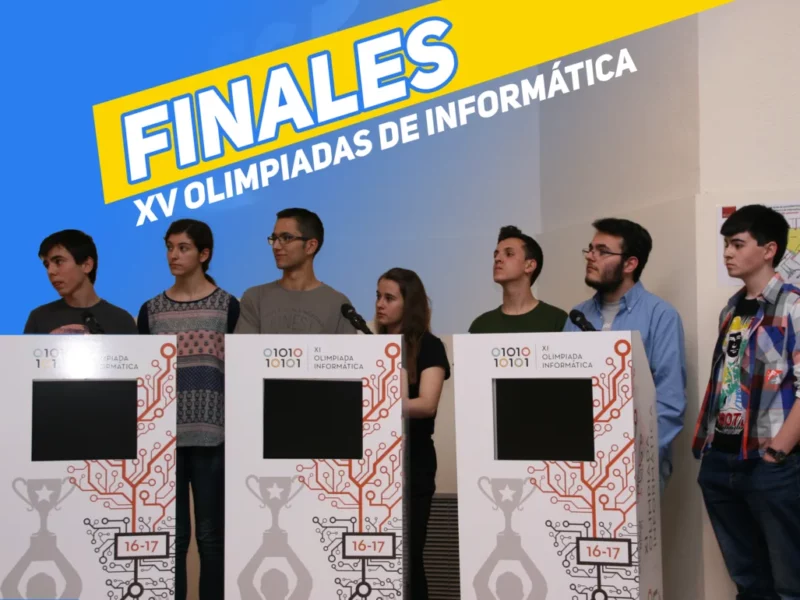We're running out of girls
By carmen lacave (University Professor)
When carrying out a study on the gender perspective among Computer Science students enrolled in the ESI[1], and obtaining enrollment figures segregated by sex, we confirm an overwhelming reality: the extremely low number of girls enrolled in our school. Specifically, in the 20/21 academic year, there were 90 girls enrolled (out of a total of 659 students) in the ESI[2], approximately 13%. This percentage coincides with the Spanish average of girls currently enrolled in university studies in Computer Science.[3], according to the “X-ray of the gender gap in STEM training”[4], prepared by the Equality Unit of the Ministry of Education and Vocational Training.
And has this always been the case? Not exactly because, in this context, "any time in the past was better." And it is that said report shows that, in the 80s, when the Computer Science degree began to be taught in Spain, the percentage of girls enrolled was approximately 30%. But, since then, and especially for 20 years, this value has been plummeting, Computer Science being the engineering with the lowest percentage of girls enrolled, despite the fact that it is the one with the greatest employability. In fact, "companies demand more graduates than we can provide”.
And this is so because we are immersed in a true technological revolution, which has been greatly accelerated due to the Covid-19 pandemic, in which the search for a job, the request for a medical appointment, the music we listen to or the classes that we teach could not be carried out today without the use of ICT[5]. However, it is really a problem that women are not part of this process of technological development. It is worth stopping to imagine the implications that this may have, and that it is already having. A few weeks ago, on the occasion of the celebration of the Winners will be announced in March, the teaching staff of the subject "Programming Methodology" proposed carrying out an activity consisting of which the students had to look for an example of an algorithm that was discriminatory on the basis of gender. Interestingly, between all of them they have found more than 60 references on algorithms that discriminate based on gender. Some of them are very specific, but others are used by well-known companies: Amazon, Google, Apple, YouTube or Facebook. That is why it is so important that women get involved in the development of algorithms and technologies; Only then can we be taken into account and this type of bias can be prevented.
Fortunately, there are more and more public and private, individual and collective initiatives that try to promote STEAM vocations[6] in general, and in Information Technology in particular, to avoid the disappearance of women from a sector as strategic as that of Information Technology.
Because the gender gap does not only occur in university studies, but this trend is already observed in high school. In the Science and Technology modality, the number of girls is approximately half. However, despite the good grades they obtain, the vast majority opt for studies related to the field of Health.
In the case of Vocational Training, both in intermediate and higher grades of the professional families of Computer Science and Communications, they only constitute 7% and 10%, respectively, of the student body, although 20 years ago the percentages were 23% and 27 % respectively.
What is happening then? Why this disinterest of girls towards technology? Where is born? It is not entirely clear, but among the most likely causes are the absence of female references, the social stereotypes that identify the informatico (in masculine) as a Geek, and those of gender, which make care-related tasks fall on women, the glass ceiling and even the lack of training in the profession itself. In a conference with 5th grade students in which I participated in February on the occasion of the Day of Women and Girls in Science, the main interest of the kids was if he had created a video game or if he had built a robot. I had to explain to them that people who work in IT do many more things, for example, programs or systems that make life easier for people (disabled people, athletes, the elderly, students,...). And the works developed by the research groups of our school they are a clear example of this.
In short, it is important that we all try, to the best of our ability, to educate our young people, from the earliest stages, on gender equality, banishing stereotypes, encouraging curiosity and facilitating the exploration of paths less trodden. .
[1] Lacave, C., Molina, AI, García-Holgado, A., & González-González, CS (2021). Delving into gender gap perceptions of computing students: A replication study. In M. Alier & D. Fonseca (Eds.), Proceedings of the Ninth International Conference on Technological Ecosystems for Enhancing Multiculturality (TEEM'21) (Barcelona, Spain, October 26-29, 2021) (pp. 103-108). MCA. doi:10.1145/3486011.3486428
[2]https://estadisticas.uclm.es/analytics/saw.dll?Dashboard&PortalPath=%2Fshared%2FEstad%C3%ADstica%20Institucional%2F_portal%2FEstad%C3%ADsticas%20de%20Estudiantes&Page=Avance%20de%20matr%C3%ADcula&NQUser=inteligenciainstitucional&NQPassword=p7bFn0H6udk&PageIdentifier=7levugq0nnl51t7c&BookmarkState=egdp2lq1bivaorfpcv1jd2fh5a&options=-
[3] The last academic year considered in the report is 2019/20.
[4] https://sede.educacion.gob.es/publiventa/radiografia-de-la-brecha-de-genero-en-la-formacion-steam-un-estudio-en-detalle-de-la-trayectoria-educativa-de-ninas-y-mujeres-en-espana/ciencia-espana-igualdad-de-genero/25710
[5] Information and communication technologies
[6] English acronyms for Science, Technology, Engineering, Arts and Mathematics











